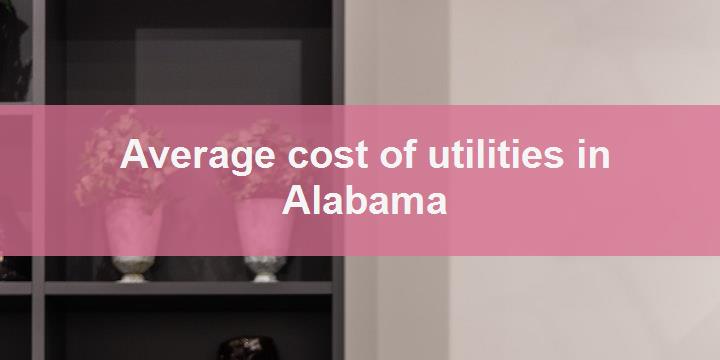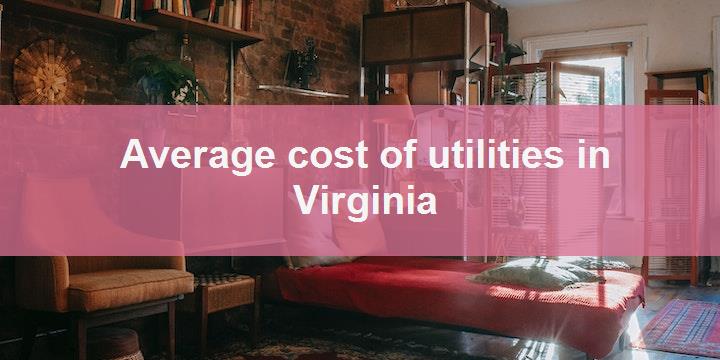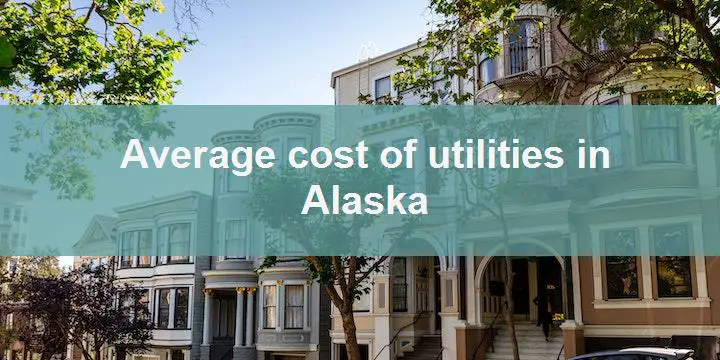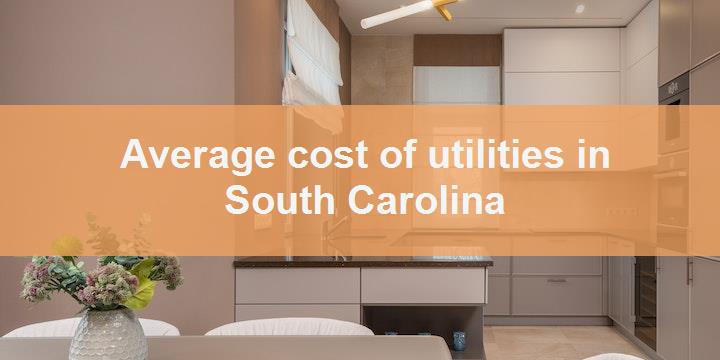When budgeting for household expenses in Alabama, understanding utility costs is key. In 2025, the average cost of utilities in Alabama is $657.04. Known for its rich history and warm Southern hospitality, Alabama’s humid subtropical climate—with hot summers and mild winters—plays a significant role in shaping energy consumption. In this guide, we’ll break down utility expenses for different household setups and seasons, giving you a clear picture of what to expect when managing your monthly bills in the Heart of Dixie.
Average Electric Bill in Alabama
When it comes to managing household expenses in Alabama, understanding your electricity costs is key. In 2025, the average electric bill in Alabama is $153.84, influenced heavily by the state’s hot, humid summers and mild winters. These seasonal shifts can lead to higher cooling costs during peak summer months, with moderate usage in the winter.
The average electric bill considers both winter ($185.00) and summer ($122.68) consumption, offering a well-rounded view of energy usage throughout the year.
Alabama vs. Georgia: Summer Energy Cost Comparison
Curious how Alabama’s electricity costs compare to its neighbor? The table below compares summer energy expenses for a large single-family home with four people in Alabama and Georgia. This comparison sheds light on how regional factors like climate and energy efficiency impact costs between the two states.
| Criteria | Alabama | Georgia |
|---|---|---|
| Total Consumption (kWh) | 862.12 kWh | |
| Electricity Rate (cents/kWh) | 15.20 ¢/kWh | 14.08 ¢/kWh |
| Estimated Monthly Cost | $131.04 | $121.39 |
| Detailed Cost Breakdown | ||
| Base Usage: 412.12 kWh | $62.64 | $58.03 |
| Refrigerator: 120 kWh | $18.24 | $16.9 |
| Air Conditioner: 240 kWh | $36.48 | $33.79 |
| Clothes Dryer: 90 kWh | $13.68 | $12.67 |
| Alabama estimated monthly cost is higher than Georgia by 7.95%. | ||
Historical Trends in Electricity Prices
The chart above illustrates historical electricity price trends for large single-family homes in Alabama during the summer. It provides valuable insights into how rates have fluctuated over time, helping you anticipate future changes and better manage your energy budget.
Electricity Cost Comparison Across Various States
Here is a comprehensive comparison of electricity costs across different states, considering various household types and seasons. This table offers a broad perspective on utility expenses.
| State | People | Household Type | Season | Appliances | Electric Monthly Bill |
|---|---|---|---|---|---|
| New York | 3 | One-bedroom apartment | Summer | Fridge, AC, Dryer |
$148.77 |
| California | 4 | Single-family large | Winter | Heater, Dryer, Fridge |
$407.08 |
| Texas | 3 | Townhouse | Winter | Heater, Dryer, Fridge |
$168.56 |
| Florida | 3 | Single-family small | Summer | Fridge, AC, Washer |
$102.05 |
| Illinois | 3 | Two-bedroom apartment | Summer | Fridge, AC, Washer |
$98.75 |
| Nevada | 2 | Studio | Winter | Heater, Fridge |
$134.31 |
| Alabama | 2 | Townhouse | Summer | Fridge, AC, Washer |
$100.70 |
For a more detailed and personalized utility expense estimate, check out our Electricity Bill Calculator. Adjust the parameters to match your household specifics and get an accurate estimate tailored to your needs.
Average Gas Bill in Alabama
When managing household expenses in Alabama, it’s important to factor in gas costs. In 2025, the average gas bill in Alabama is $240.88, with expenses influenced by the state’s hot summers and mild winters. While gas usage typically peaks in the winter for heating, appliances like water heaters, stoves, and ovens contribute to year-round consumption.
The average gas bill reflects seasonal variations, accounting for higher usage during winter ($352.83) and lighter demand in the summer ($128.92). This balance helps provide a more accurate picture of annual energy costs.
Alabama vs. Florida: A Summer Gas Usage Comparison
Curious about how Alabama’s summer gas costs compare to its neighbor? The table below highlights gas expenses for a large single-family home with four people in Alabama and Florida. This comparison reveals how climate differences and household energy habits influence gas consumption between the two states.
Gas Bill Comparison Overview
| Criteria | Alabama | Florida | Avg. USA |
|---|---|---|---|
| Total Consumption (MCF) | 6.99 MCF | ||
| Gas Rate ($/MCF) | $22.03 | $28.03 | $17.73 |
| Estimated Monthly Cost | $154.04 | $195.99 | $123.97 |
| Appliance Cost Breakdown | |||
| Outdoor Grill | $12.16 | $15.47 | $9.79 |
| Water Heater | $89.18 | $113.47 | $71.77 |
| Gas Stove | $20.27 | $25.79 | $16.31 |
| Gas Oven | $32.43 | $41.26 | $26.10 |
| Alabama's estimated monthly cost is lower than Florida by 21.40%. | |||
| Alabama's estimated monthly cost is higher than the Avg. USA by 24.26%. | |||
The chart above illustrates historical gas price trends for large single-family homes in Alabama during the summer. This data offers valuable insights into price fluctuations over the years, helping homeowners anticipate future changes and optimize their energy budgets.
Gas Cost Comparison Across Various States
Here is a detailed comparison of gas costs across different states, considering various household types and seasons. This table offers a comprehensive view of utility expenses.
| State | People | Household Type | Season | Appliances | Gas Monthly Bill |
|---|---|---|---|---|---|
| New York | 3 | Townhouse | Summer | Water heater, Stove, Oven |
$88.71 |
| Colorado | 2 | Studio | Summer | Water heater, Stove, Oven |
$36.31 |
| California | 4 | Single-family small | Winter | Gas heating, Dryer, Oven |
$265.08 |
| Texas | 3 | Townhouse | Winter | Gas heating, Dryer, Oven |
$279.14 |
| Illinois | 3 | Single-family small | Summer | Water heater, Stove, Oven |
$79.83 |
| Georgia | 4 | Single-family large | Summer | Water heater, Stove, Oven |
$172.91 |
| Oklahoma | 2 | Studio | Winter | Gas heating, Dryer, Oven |
$170.61 |
For a more detailed and personalized utility expense estimate, explore our Gas Bill Calculator. Customize the parameters to match your household specifics and get an accurate estimate tailored to your needs.
Average Water and Sewer Bill in Alabama
When considering Alabama for your next move or investment, it’s essential to understand the costs associated with water and sewer services. In 2025, the average water and sewer bill in Alabama is $70.00, a key factor that can significantly impact your household budget and long-term financial planning.
Comparison of Water and Sewer Fees Across States
To provide context, here’s how Alabama’s water and sewer fees compare with those of 11 neighboring states:
| State | Average Water and Sewer Fees |
|---|---|
| Georgia | $48.00 |
| Mississippi | $43.00 |
| Florida | $33.00 |
| Tennessee | $63.00 |
| Louisiana | $51.00 |
| Texas | $57.00 |
| Arkansas | $46.00 |
| North Carolina | $50.00 |
| Kentucky | $69.00 |
| South Carolina | $53.00 |
| Missouri | $59.00 |
When compared to states like Florida and Georgia, Alabama’s water and sewer fees are highly competitive, offering more affordable rates without compromising service quality.
Efficient Water Management Strategies in Alabama
Alabama’s diverse climate and geography create unique opportunities for efficient water management:
- Rainwater Harvesting: Collecting and storing rainwater for non-potable uses, such as irrigation and landscaping.
- Smart Irrigation Systems: Utilizing weather-based irrigation technologies to optimize water usage and reduce waste.
- Wetland Restoration: Investing in projects that restore wetlands, naturally filtering water and reducing the need for extensive treatment.
- Advanced Leak Detection: Implementing modern technologies to quickly identify and repair leaks, minimizing water loss.
State-Supported Water Conservation Programs
Alabama actively promotes water conservation through various programs and initiatives:
- Rebate Programs: Offering financial incentives for installing water-efficient appliances and fixtures in homes and businesses.
- Educational Workshops: Providing community workshops focused on sustainable water practices and conservation techniques.
- Grant Opportunities: Funding community projects that promote water conservation and innovative water management solutions.
Environmental and Economic Benefits
Alabama’s commitment to sustainable water management practices not only helps protect natural resources but also reduces utility costs for residents. This dual focus on environmental stewardship and economic efficiency makes Alabama an attractive option for both homeowners and investors.
Conclusion
With competitive water and sewer fees, forward-thinking water management strategies, and strong state support, Alabama offers an ideal environment for cost-conscious homeowners and real estate investors. Our team is here to provide expert advice and resources to help you make informed decisions. Choosing Alabama means investing in a state that values both economic efficiency and environmental sustainability.
Garbage/Trash Removal Costs in Alabama
When budgeting for utilities in Alabama, it’s important to factor in the cost of waste management. In 2025, the average cost for garbage and trash removal services in Alabama is around $20.00. This expense can vary depending on the service provider, the frequency of pick-ups, and whether recycling services are included in the plan.
Many communities in Alabama offer bulk waste pick-up services, which can influence overall costs. Additionally, the state’s growing recycling initiatives aimed at reducing landfill usage may also impact pricing, depending on local programs and participation levels.
Garbage/Trash Removal Costs Comparison Across States
To provide a clearer picture, here’s how Alabama’s average garbage/trash removal costs compare with those of neighboring states:
| State | Average Cost |
|---|---|
| Alabama | $20.00 |
| Ohio | $26.00 |
| Mississippi | $20.00 |
| Louisiana | $21.00 |
| Arkansas | $22.00 |
When compared to states like Ohio and Louisiana, Alabama’s garbage removal costs are relatively competitive. This cost efficiency is largely due to the state’s effective waste management practices and regional pricing structures, which help keep expenses in check for residents.
Understanding these costs can help you better manage your household budget. To find the most cost-effective options, consider comparing local waste management providers and exploring recycling programs in your area.
Internet and Cable TV Expenses in Alabama
When it comes to managing household budgets in Alabama, internet and cable TV expenses are key components. In 2025, the average internet and cable TV cost in Alabama is around $109.66. These costs can vary significantly based on your location, service provider, and the type of plan you choose.
Alabama offers a wide range of internet and cable TV providers, giving residents plenty of options. This competitive market helps keep prices reasonable while ensuring reliable service quality across urban and rural areas.
Internet and Cable TV Pricing by Provider in Alabama
| Provider | Internet Price | Cable TV Price | Bundle Price |
|---|---|---|---|
| Comcast | $55.99 | $66.99 | $110.99 |
| Verizon | $56.99 | $67.99 | $117.99 |
| AT&T | $51.99 | $62.99 | $99.99 |
Each provider offers various packages tailored to different needs. Whether you prioritize high-speed internet for remote work or comprehensive cable bundles for entertainment, comparing plans is essential to find the best fit.
How Alabama’s Costs Compare with Neighboring States
To give you a broader perspective, here’s how Alabama’s average internet and cable TV expenses compare to other states in the region:
- Georgia: $113.66
- Mississippi: $114.66
- Tennessee: $116.32
- Florida: $114.66
- South Carolina: $112.66
- Louisiana: $111.66
- Arkansas: $111.66
- North Carolina: $114.66
Compared to neighboring states like Georgia and Mississippi, Alabama’s internet and cable TV costs remain competitive. This highlights the importance of shopping around and comparing providers to secure the best value for your budget.
For the best deals on internet and cable TV services, we recommend regularly comparing providers and their latest packages. Evaluating service speed, channel offerings, and pricing ensures you’re getting the most for your money. 🌐📺
Home Phone and Mobile Phone Costs in Alabama
When budgeting for household expenses in Alabama, phone service costs are an important factor to consider. In 2025, the average home phone and mobile phone costs in Alabama are around 62.66, though this can vary depending on your provider, service plan, and location.
Alabama offers a wide range of phone service providers, giving residents multiple options to choose from. This competition helps keep prices affordable while maintaining strong service quality, especially in both urban and rural areas.
Phone Service Pricing by Provider in Alabama
| Provider | Mobile Phone Price | Home Phone Price |
|---|---|---|
| Verizon | $67.99 | $34.99 |
| AT&T | $62.99 | $29.99 |
| T-Mobile | $56.99 | Doesn’t provide |
These providers offer a range of plans tailored to different needs, from basic packages to unlimited data options. It’s essential to compare features, coverage, and pricing to find the best plan that fits your lifestyle.
How Alabama’s Phone Costs Compare with Other States
To give you a broader perspective, here’s how Alabama’s average home phone and mobile phone expenses compare to neighboring states:
- Georgia: 66.66
- Mississippi: 65.66
- Tennessee: 68.32
- Florida: 65.66
- South Carolina: 66.66
- Louisiana: 64.66
- Arkansas: 65.66
- North Carolina: 64.66
When compared to nearby states like Georgia and Mississippi, Alabama’s phone service costs are highly competitive. This highlights the value of exploring different providers to ensure you’re getting the best deal.
For the best phone service deals, we recommend comparing various providers regularly. Check for promotional offers, bundle deals, and discounts to maximize savings. 📞📱
Stay Updated for the Best Rates
Since prices and plans can change frequently, it’s wise to review available options periodically. Our team updates this article monthly with the latest data, helping you stay informed about the best rates and services. Be sure to check back often for the most current insights. 🌟
FAQ
Q: 💡 What is the average monthly electric bill in Alabama in 2025?
A: The average monthly electric bill for Alabamians in 2025 is approximately $153.84.
Q: 🔥 What is the average monthly gas bill for Alabamians in 2025?
A: The average monthly gas bill for Alabamians in 2025 stands at approximately $240.88.
Q: 🚰 What is the average monthly water and sewer bill in Alabama in 2025?
A: The average monthly water and sewer bill in Alabama in 2025 is around $70.00.
Q: 🗑️ What is the average monthly garbage and trash removal cost in Alabama in 2025?
A: The average monthly garbage and trash removal cost in Alabama in 2025 is about $20.00.
Q: 📡 What is the average monthly internet and cable TV bill in Alabama in 2025?
A: The average monthly internet and cable TV bill in Alabama in 2025 is approximately $109.66.
Q: 📱 What is the average monthly home and mobile phone bill in Alabama in 2025?
A: The average monthly home and mobile phone bill in Alabama in 2025 is around 62.66.
Q: 🧾 What is the total average monthly cost of utilities in Alabama in 2025?
A: The total average monthly cost of utilities in Alabama in 2025 is approximately $657.04.



